Hunza River
Hunza is the most beautiful and significant area in Gilgit Baltistan. The enchanting beauty of this River is no less than a blessing for Pakistan. The Scenic beauty of the River and valley attract tourist. It is one of the most well-known Rivers in Pakistan.
Introduction to Hunza River
Hunza is the main River located at Hunza, Gilgit Baltistan, Pakistan. The Hunza river combines two gorges, the Chapursan, and the Khunjerab Nala. Glaciers of the Karakoram ranges nourish these two gorges. This Hunza River merges with the Gilgit and Naltar rivers before entering the Indus.
Geography of Hunza River (35°55′N 74°22′E)
The Hunza river flows from north to South, cutting the Karakoram range. The Karakoram Highway ( N-35)moves along the Hunza river valley, shifting to Khunjerab valley, at the place of Junction, and finally reaching the Khunjerab Pass at the China Border Xinjiang. Hunza valley has three partitions: Lower & Upper Hunza and Gojal valley.
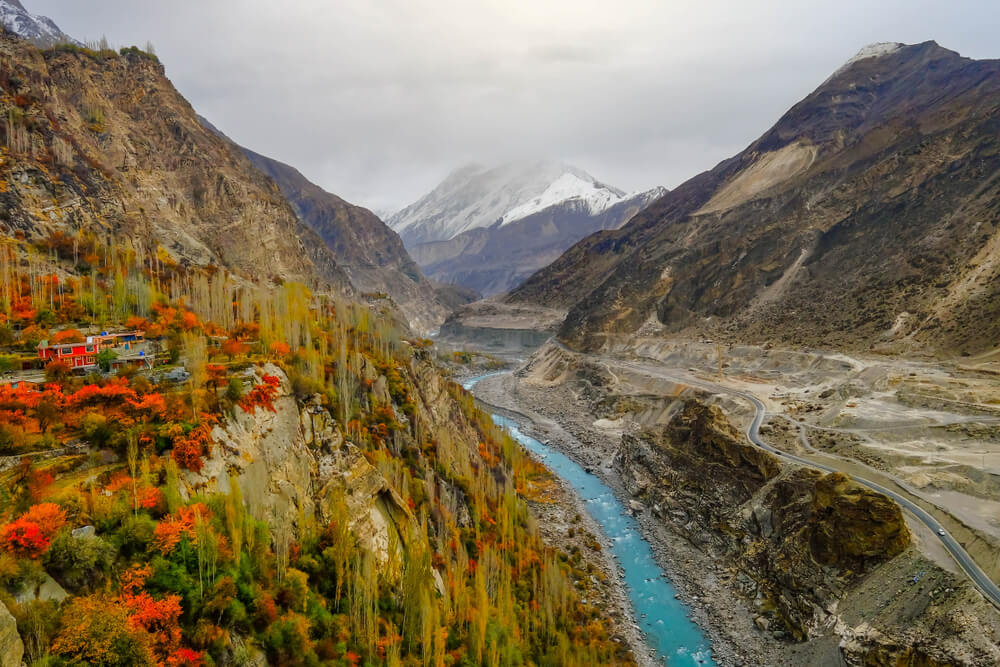
Fascinating River for Hunza Valley
Hunza river has two well-defined streams. The major River, named Shandu, flows across the Hunza valley, which runs from north and South from east to west like a thin isthmus between two huge pieces of land, and the leading River, named Karan, flows north-west and south-east into Tibet through the eastern and western parts of land that detach Hunza from Baltistan. The Himalayas Glaciers are the water source for the Hunza river. Snow and ice of glaciers melt during the summer season and nourish the River, which moves in the south direction.
Contribution of River
The Hunza river contributes a lot to Local people. They use this river water for drinking and cultivating their crops for irrigation purposes. A dam is also built on the River Hunza with a grid station which supports in production of Hydropower to some extent.
Hunza River Lake
Three lakes exist in Hunza Valley, which is detailed below.
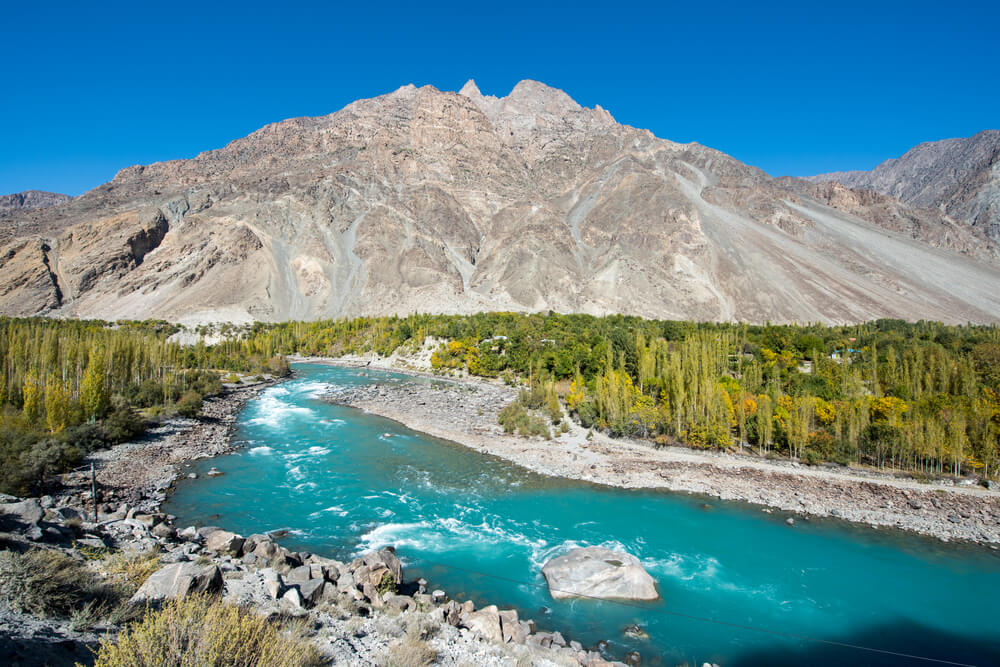
Attabad Lake
This Attabad lake is situated in the region of Gojal of Hunza valley in Gilgit. This lake has become a massive attraction for tourists and vacationers in Gilgit Baltistan. Various recreational activities are conducted at this lake, like boating, fishing, jet skiing, and much more. This lake is famous worldwide because it was formed by a natural disaster in 2010. The clear blue water of this Attabad lake is fascinating.
Borith Lake
Borith Lake is located in the Hunza district of Gilgit Baltistan, Pakistan. Borith Lake lies approximately 2 km north of Hussaini in a small vacant space with a height of 2600 meters ( 8500 feet). This lake can be accessed via a 02 km unsurfaced jeep route from Hussaini village, which exists next to Gulmit village.
Shimshal Lake
Shimshal is a village in Gojal Tehsil of Hunza District, in the region of Gilgit Baltistan, Pakistan. It is a well-populated district at 3100 meters ( 10200 ft) above sea level. It is the largest valley and occupies almost all Hunza District areas. Shimshal lake is in Shimshal valley and is a streamlet of the Hunza river.
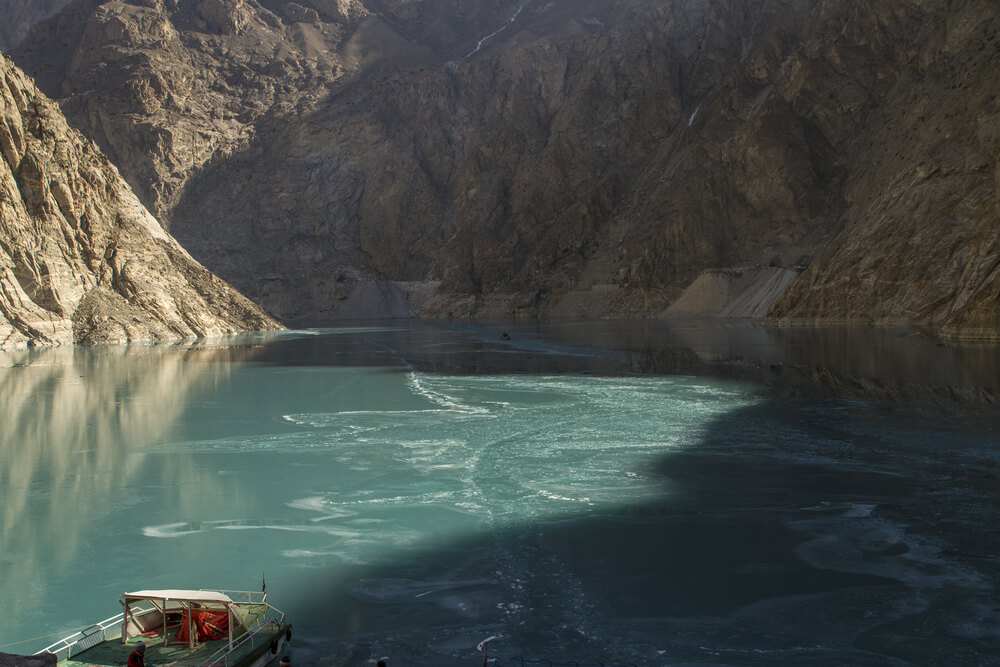
Tributaries of Hunza River
Virjerab and many other glaciers feed the Shimshal river, which merges with the Khunjerab river after the region of Passu and ultimately joins the Hunza river. The glaciers of the Gujirab range fed the Gujirab river, which moves towards the west and merges with River Khunjerab and ultimately joins the Hunza river. The Khunjerab river is constituted when glaciers on the mountains in the South and north of Khunjerab pass melt which flow through the Hunza river at Hunza Valley. A forty-nine-kilometer-long northern glacier on Karakoram mountain makes the Hispar river which passes through many regions and finally joins the Hunza river at its valley.
Hunza River Facilities
Hunza is a mountainous area with limited facilities, including coffee shops, roads, Guest camps, hotels, and medical services. A motor mechanic facility is also available if a problem occurs with the vehicle. Transportation facilities are also available along the Hunza river in the valley. Due to the construction of the National Highway, there are many ways of transportation, but due to a land sliding calamity, they were recently blocked. For continuity of transport service, local people build a minor road and hang bridges on the River. Different vehicles are available for rental purposes, including a Land cruiser, Jeep, Prado, and many others that are easily movable on the unpaved roads of Hunza valley.
The climate at Hunza Valley
The climate in Hunza valley remains moderate during the summer season. Central Hunza’s temperature from July to August is 31° C . Upper Hunza ( the Gojal Valley) is even more relaxed than other regions.
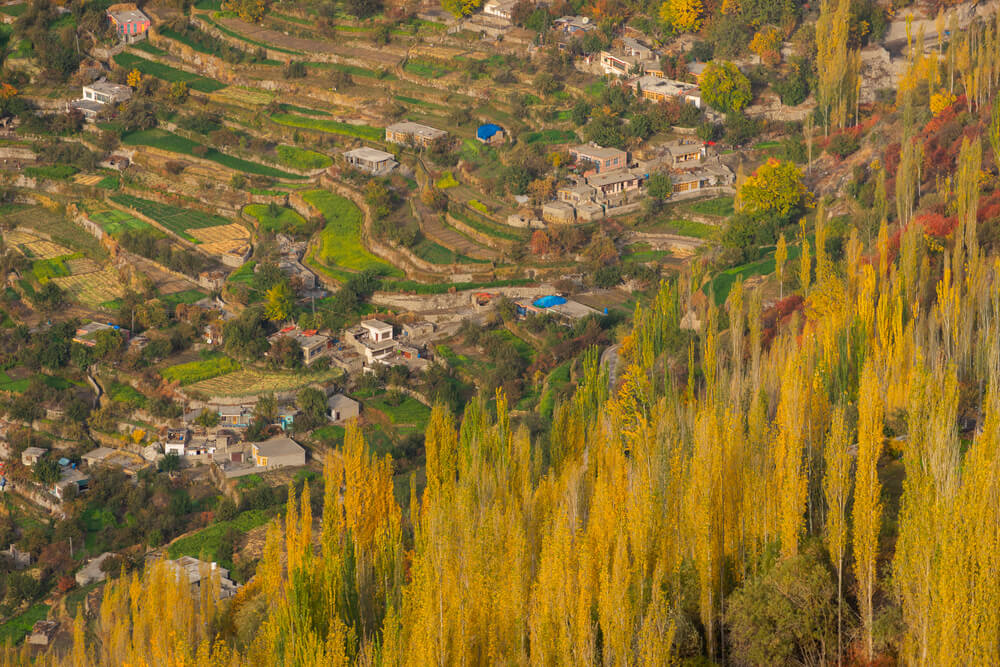
Nearby Attraction of Hunza Valley and River
Hunza river and valley is blessed with Natural beauty. The scenic beauty and magnificent views of Hunza valley and the River attract tourists yearly. Below is the detail of some beautiful places in Hunza valley that tourists must visit.
Eagle Nest View Point
The topmost point of Hunza valley is where the whole of the Hunza valley and Nagar valley can be viewed properly. Duiker is a place name that gives enchanting views of the valley that leaves stunning effects on the mind. This place provides spectacular views of mountains covered with snow to visitors. Birds and cliffs increase the beauty of this valley. Hunza valley Duiker is also one of the places where eagles nest. The most enchanting view is to watch the sunrise and sunset over the majestic peaks of Lady Finger and Rakaposhi from the famous eagle nest in Duiker.
Attabad Lake
Attabad lake is the most beautiful lake in Gilgit Baltistan. It is also known as Bride of Hunza valley. It is situated along the Karakoram Highway before the village of Shishak and is the best tourist attraction in Hunza. The turquoise-blue color of the lake is the reason for the interest of tourists. This Attabad lake is neither a natural lake nor artificial construction. A landslide stopped the Hunza river and demolished Attaabad on January 4, 2010, which ruined the village. Many people expired, and many were displaced or migrated. The length of this breathtaking beautiful lake is 13 miles, and its depth is 358 feet. This lake is considered one of the splendid lakes of Pakistan.
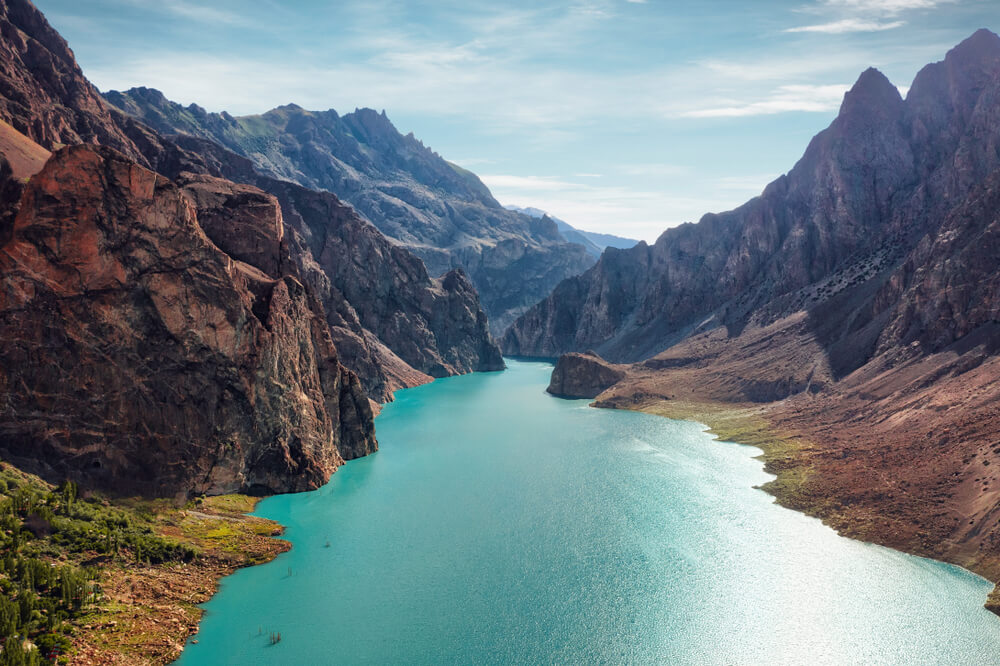
Hussaini Suspension Bridge
Hussaini Suspension Bridge is an old bridge located near Gulmit, 10 min away from the main road. Hussaini suspension bridge is full of adventure and thrill. It has 400 steps from one end of the bridge to the other. Some people find it scary but safe, secure, and stable. This thrilling and adventurous structure is a source of attraction for the tourist as the hiker crosses the bridge carefully, considering it a thrill or adventurous activity.
Khunjerab Pass
Khunjerab Pass is a portal between Pak-China for trade between the two countries and is also open to ordinary people. This pass has the highest mountain with an altitude of 4693 meters or 15,397 feet. Khunjerab Pass is the last spot to visit Hunza, which joins Pakistan and China. It exists not on the boundary of Hunza valley but also in Pakistan. Khunjerab natural Park exists here and reaches the country’s enormous border,4706 m/ 15,439 ft. The park has vast nature reserves, where animals like yaks and some marmots inhabit. Khunjerab National Park has a high elevation in Gilgit Baltistan, Pakistan, and is considered one of the few high-altitude parks. Many animal species like snow leopards, Marco Polo sheep, and Himalayan ibex are inhabitants of this place. It is only a few kilometers away from the Pakistani border town of Sost, and it is in the mid of no man land between China and Pakistan. Khunjerab Pass is where this park originates, where the world’s best-paved road border checkpoint with an altitude of 16000 feet above sea level exists.
Naltar Valley
This valley is one of the most famous and beautiful places in Hunza valley. In this valley, Crystal lake exists, which attracts many tourists every year.
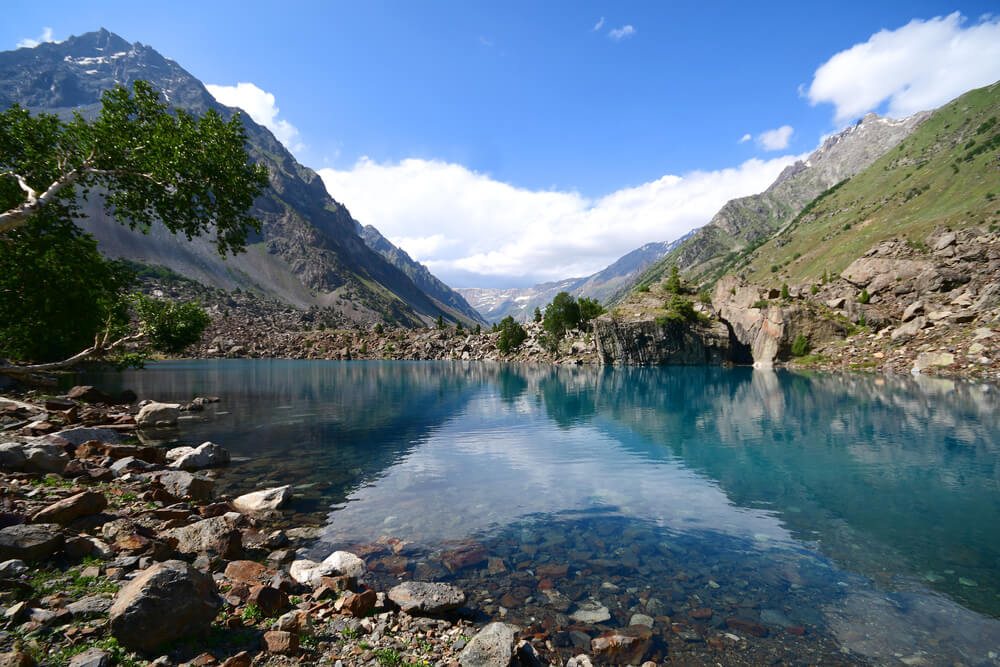
Altit Fort
One of the ancient and royal forts is located in Hunza above Karimabad. Congenital rulers of the Hunza region were inhabitants in this fort entitled to Mir. Approx 1100 years ago, Altit Fort was the house of the preceding prince. Now, this fort is transformed into a museum as this fort is a work of art and architecture. The Agha Khan Culture Trust renovates the elegant architecture, conserving it for the future generation.
Baltit Fort
Baltit Fort is the supreme fort situated at an ascending of 350 meters from the main Karimabad Bazar. The breathtaking beauty of Hunza valley can be viewed from this Baltit Fort. This fort is located in the mid of Hunza. In this valley, the Baltit fort is one of the ancient historical monuments of the state and a sign of feudal rule. Initially, Altit fort was home to Mir, or king of Hunza, but was replaced by Baltit fort. This fort depicts the rich history and past of ancestors and legends who have spent their lives there. This fort is known as Baltit because it refers to the people of Baltistan. In modern times, the Baltit fort is located at the top of the Bazar of Karimabad, giving a stunning and splendid view of the surrounding beauty.
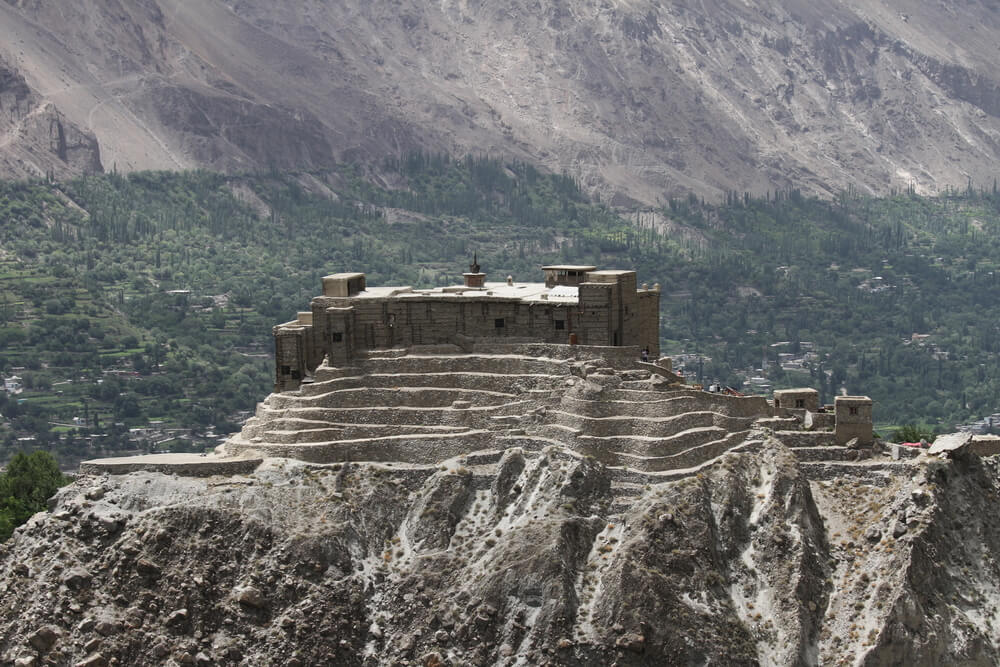
Karimabad Bazar
Karimabad is the capital of Hunza and is a charming settlement. Karimabad is one of the most beautiful regions of Pakistan and is located in the heart of Hunza valley. Golden sand and incredible natural scenery attract and welcome tourists. The calm atmosphere, beautiful apricot tree color, and swaying tree of cherries enhance the beauty. Karimabad serves all budgets, looking for daring, water sports, adventurous activities, or shopping.
Hopar Nagar Valley
Nagar valley is situated on the other side of the Hunza river. The peace and calmness of nature can be observed and felt in the lap of this valley. Hopper glacier is accessible via a short hike from Karimabad. It takes about 40 to 45 minutes to get there. Hopper glacier is grey-black, which differentiates it from others.
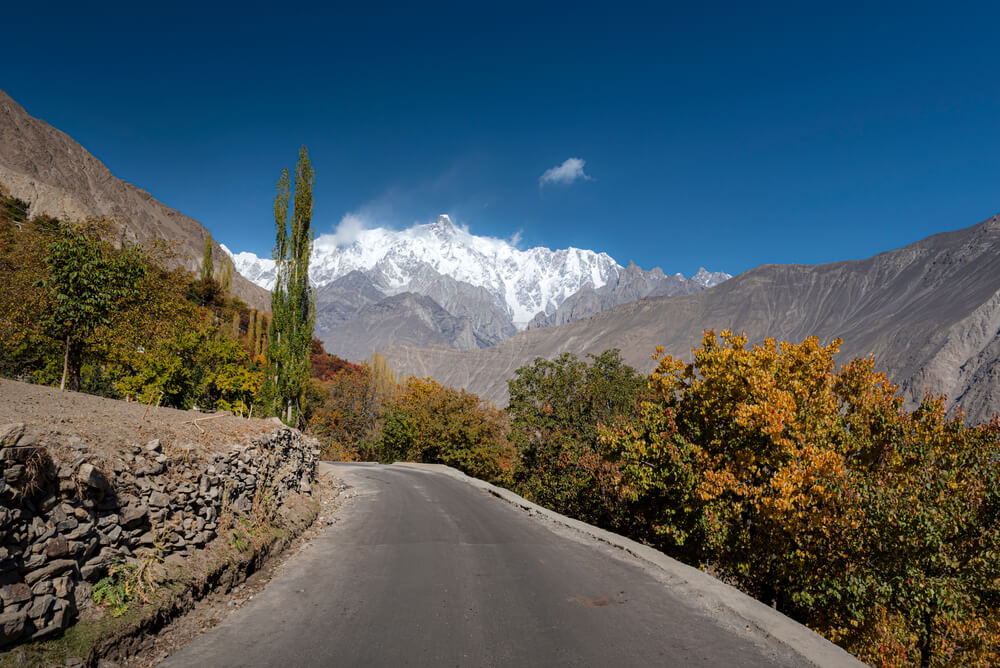
FAQS
Which glacier is related to the Hunza River?
The Batura glaciers are located in the Upper Hunza valley, in the region of Gilgit Baltistan, Pakistan.
Why is the Hunza River famous?
Hunza River and valley is famous for its beauty. Hunza is a fascinating river in Hunza valley, formed from the source of Attabad Lake and many other tributaries from the glaciers. The crystal-like cold water flows through this Hunza valley and merges with the Gilgit river. Snow-capped and rugged mountains around the valley are the reason for its fame. Rakaposhi is located in the neighboring valley, but many tourists are attracted to get a glance at the glowing and sparkling ice wall of the Rakaposhi mountains.
Conclusion
Hunza river is a major tributary of the Indus River, giving 12 % of the total runoff in the Upper Indus River. Hunza valley is heaven on earth, surrounded by several beautiful top peaks, lush greenery, ice glaciers, and a calm environment. Hunza Valley Lakes are the most prominent tourist attraction, offering different activities like Jet skiing, fishing, and recreational activities.
